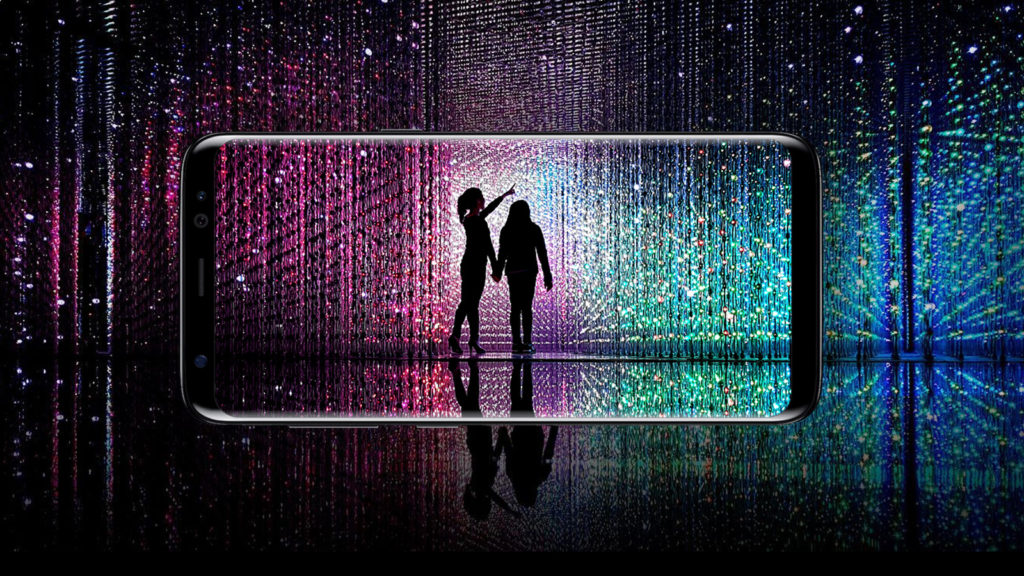The Galaxy S8 makes for quite a fetching high-end handset, doing the whole high screen/body ratio thing and introducing iris scanning and facial recognition into the mix.
There’s the choice between Snapdragon 835 and Exynos 8895 chip, 4GB of RAM, a 5.8-inch or 6.2-inch 2960×1440 display, IP68 water resistance and the Bixby assistant. But what else is worth knowing? We’ve got a few things you might not know…
No ad to show here.
Bixby supports these apps already
FYI: These are the supported apps in Bixby right now. #galaxys8 #unboxyourphone pic.twitter.com/elM3qCQV5s
— Gearburn (@gearburn) March 29, 2017
The smart, voice-powered service is effectively Samsung’s take on Google Now or Google Assistant. Between the voice-driven functionality and a dedicated screen for your contextual alerts and info cards, it’s clear that Samsung is inspired by the Mountain View firm.
Hopefully it’s as good as Samsung makes it out to be (the S8 has a Bixby button after all), but the company has already got a smattering of Bixby-enabled apps, seen in the tweet above. Samsung will need to get third-party developers on board though, such as the likes of Instagram, Google Play Music, Snapchat, Lyft and others.
It’s mostly the same camera tech, but with an interesting trick
The Galaxy S7 had a fantastic camera, being a 12MP, f/1.7 sensor that excelled in low light. We don’t see major hardware improvements here, but we do see the addition of so-called multi-frame image processing.
“With this technology, the camera takes multiple photos in rapid succession instead of just one, then selects the clearest image and uses the others to reduce the blur,” Samsung explains on its website. In other words, fast moving scenes and low-light situations should see better results on paper.
You can technically use Windows on the DeX dock
Samsung also introduced the DeX dock at the Galaxy S8 event, allowing users to get a desktop-style experience when plugging their phone into said peripheral.
And yes, you can indeed remotely run Windows via this dock, in case you want to use legacy Windows apps and other programs not available on Android.
“…beginning in the first half of 2017, customers will be able to use VDI to remotely use Windows OS as they would on a desktop,” Samsung noted. It’s worth adding that there are Android apps that let you use remote desktop functionality already, but it’s a cool feature anyway.
The dock will be available at the end of May locally, with a price tag in the region of R2500.
There’s a dual-SIM variant too
Samsung has traditionally steered clear of dual-SIM technology, only recently embracing the tech in some of its more prominent offerings.
Interestingly enough, there is indeed a dual-SIM model as well, taking the hybrid route. So that means you can swap out the microSD card for a second SIM card, if you like.
We’ve asked Samsung South Africa about the possibility of a local release and will update the article if/when we get a response.
No word on Samsung Pay in SA just yet
It’s not technically Galaxy S8 news, but we also used the opportunity to ask Samsung’s local team about Samsung Pay in South Africa. After all, the company was targeting a Q1 2017 release at the time of the Note 7 launch.
The updated plans are more vague, as the team confirmed this week that discussions are still ongoing. The company noted the complex nature of these talks as well. In other words, don’t expect a release any time soon.
Expect better audio recording than the S7
Audio recording is still an Achilles Heel for the vast majority of smartphones out there, with the likes of the LG V20 and Lumia devices being exceptions more than the rule.
However, Samsung claims the audio recording chops are much improved in the S8, thanks to a High AOP (Acoustic Overload Point) microphone that supposedly minimises distortion. More mics would be nice, but this seems like a step in the right direction anyway.
There’s haptic feedback in the home ‘button’ but it sucks
Apple may have ditched the physical home button in the iPhone 7, using a capacitive key instead. But the haptic feedback made for some impressive tactile feedback, as if you were pressing a physical button.
The Galaxy S8 tries to do something similar, with users pressing where the home button would be to get haptic feedback. But truth be told, it’s nowhere near as satisfying as Apple’s implementation at all.
